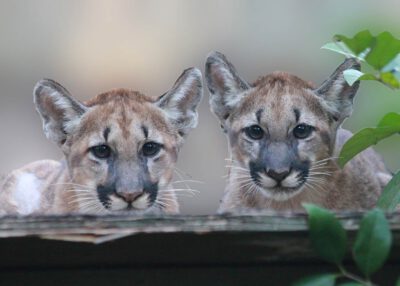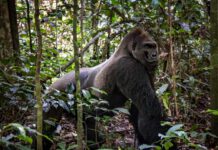
(CC BY-SA 3.0)
Washington, DC — Florida panther mortality is off to another record start in 2012, with the tenth and eleventh cats perishing this week. Panther deaths so far this year are nearly double replacement from new litters and signal that shrinking habitat may be pushing the wide-ranging predators rapidly to extinction, according to Public Employees for Environmental Responsibility (PEER).
The total number of Florida panthers remaining in the wild is estimated to range between 100 and 120. However, the loss of more than two panthers a month in 2012 coupled with the deaths of 25 in 2011 bodes ill for this iconic predator which been listed as an endangered species for more than 40 years.
The nature of the latest deaths is also troubling. Last year, the leading cause of death was car collisions, more than twice the killings from “intraspecific aggression” (i.e., killed by other panthers protecting their home ranges). Thus far in 2012, however, more panthers killed each other (5) than all of last year and more than died as road-kill (4). This changing pattern reflects adults unable to find adequate space. The Florida Wildlife Conservation Commission website gives this wide-eyed summary of panther habitat needs:
“Panthers need lots of land… The home range of male panthers is about 520 square km. That’s about 400 times as large as Disney’s Magic Kingdom. The female’s range is about 195 km. That’s about 150 times as large as the Magic Kingdom!”
“Individually, these panther deaths are difficult to avoid but collectively they are the unavoidable result of official dereliction of duty,” stated PEER Executive Director Jeff Ruch, whose organization is engaged in a number of legal actions to protect the remaining shrinking panther habitat. These actions seek to overturn decisions by federal agencies, principally the U.S. Fish & Wildlife Service and the National Park Service, citing:
- The concerted refusal to outline critical habitat needed for the Florida panther to recover, as has been designated for hundreds of other species;
- The failure to block sprawling new developments, no matter how injurious, carving apart panther country; and
- Opening prime panther areas, such as the vast Addition Lands of Big Cypress National Preserve, to off-road vehicle traffic.
“These and other official actions are creating conditions which are both unsustainable and inhumane for the Florida panther,” Ruch added, noting the detailed and continuing history of scientific suppression that has allowed these agencies to maintain their current posture that the species is recovering, despite mounting evidence to the contrary. “Soon, the only place the Florida panther will be seen is in a zoo or adorning a personalized license plate.”
Public Employees for Environmental Responsibility (PEER)
peer.org








